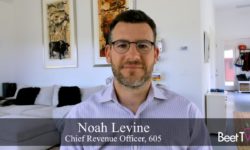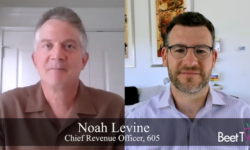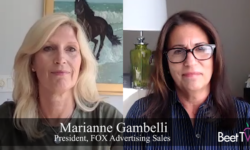The growing audience for advertising-based video on demand (AVOD) services like Pluto TV, Roku Channel and Tubi is driving a shift in media spending that’s likely to be long-lasting. More of their video ad inventory will be offered among programmatic platforms that shaped the market for digital display ads in the past decade.
Magnite, a sell-side platform (SSP) that was formed this year with the merger of Rubicon Project and Telaria, has its eye on the burgeoning market for programmatic video as more marketers shift their media budgets away from the estimated $70 billion market for linear TV advertising. The company aims to be the sell-side equivalent of The Trade Desk, which helps marketers find media inventory as an independent demand-side platform (DSP).
In discussing the recent merger, Magnite CEO Michael Barrett sees the opportunity to build scale for content providers whose ad inventories include a variety of formats in video, audio, mobile and web channels.
“The idea was that publishers are looking to work with fewer partners that can do more for them, and ad tech is notoriously fragmented,” Barrett said in the latest installment of the Beet TV/VAB “TV Reset” forum. “We saw an opportunity to create an alternative — an independent, omnichannel play.”
Speaking to Sean Cunningham, president and CEO of VAB, Barrett said Magnite combines the strengths of Telaria in connected TV (CTV) with Rubicon’s background in display, audio and digital out-of-home (DOOH) advertising to provide a more unified platform for publishers to connect with media buyers.
“Buyers don’t want to work with five platforms to get the inventory of one media company,” Barrett said. “Our partners on the publishing side can go in full-in on programmatic and still guard the economics that they rightfully fight for, but accommodate what the buyers are asking for.”
‘AVOD Boom’
He anticipates strong growth for AVOD services as consumers look to stretch their limited budgets for subscription video on demand (SVOD) services like Netflix, Amazon Prime Video, Apple TV+, Disney+, HBO Max, Hulu and YouTube Premium.
“The most interesting shift is SVOD versus AVOD,” Barrett said. “Two years ago, it was clear that the Netflix model was the model that everyone emulated.”
However, keeping up with Netflix’s annual programming budget, which was forecast to top $17 billion this year, is a daunting proposition for any VOD service that relies only on subscription revenue. By selling advertising, AVOD services gain the financial resources to license higher-quality programming that’s appealing to viewers, while also helping marketers connect with them
“The AVOD world will be booming,” Barrett said. “Consumers have already raised their hand and said, ‘This is how I like to consume content. This is by choice. This is here to stay.'”
You are watching TV Reset, a leadership forum produced in partnership with VAB. The series is presented by 605 and Magnite. For more videos please visit this page.











































